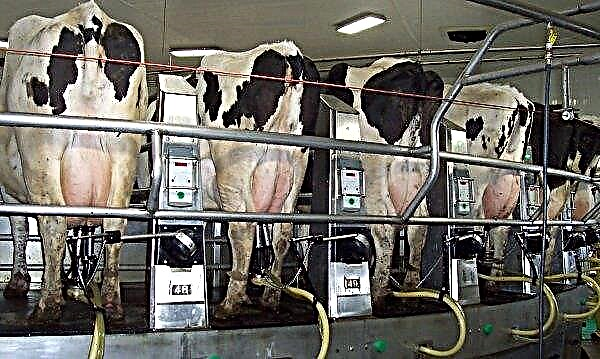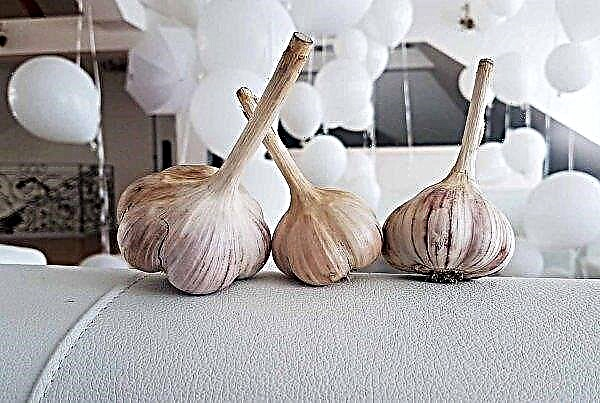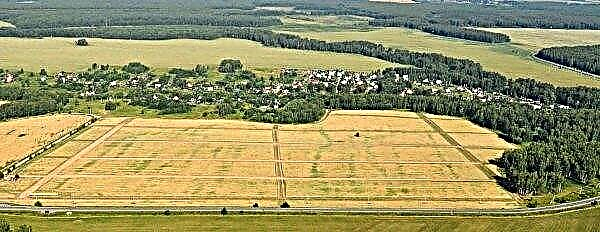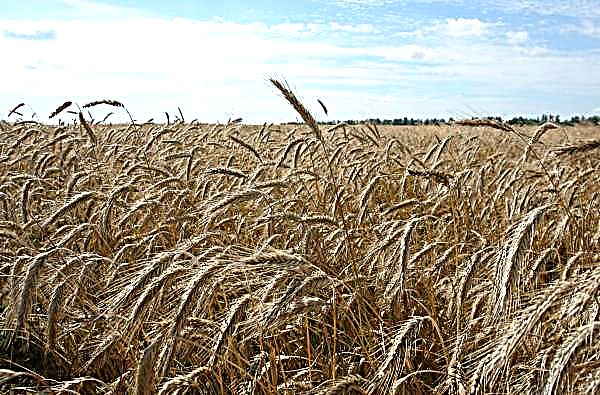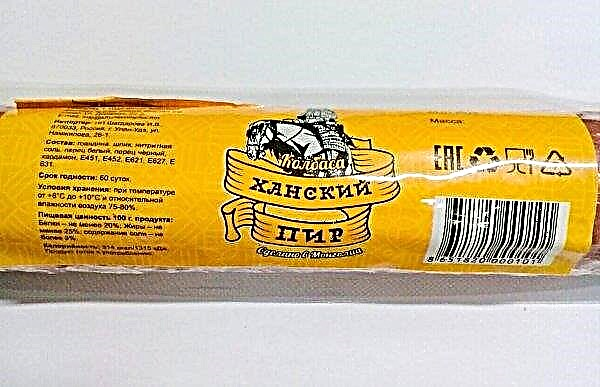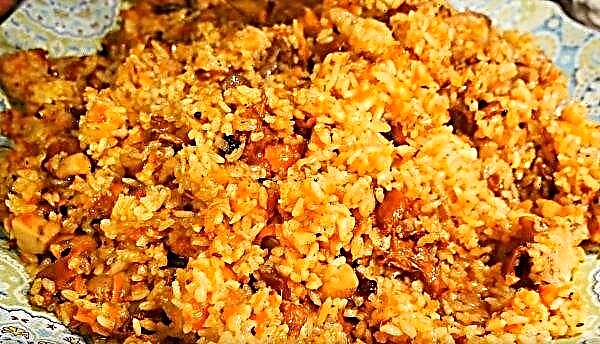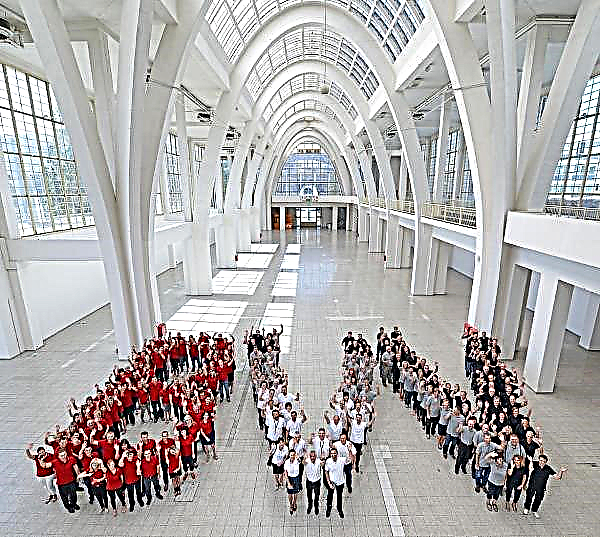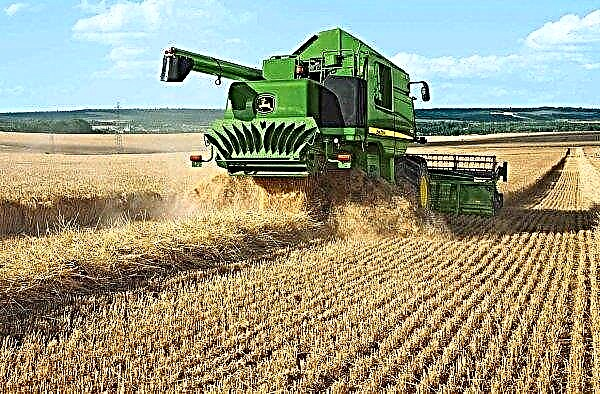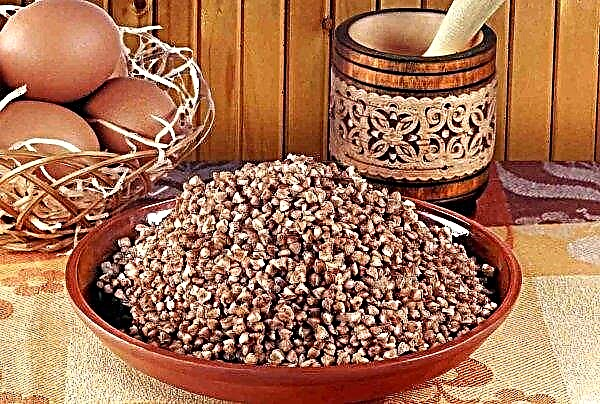Greenhouse “Snowdrop” is a very simple and at the same time multi-functional version of such products, which is able to provide a good harvest of all crops grown. With the comparative simplicity of the design, it has all the necessary qualities, so it will become an indispensable assistant for every summer resident. What are the main characteristics of this shelter and what you should know about the nuances of its installation - this will be discussed later.
Did you know? The first mobile greenhouse was an ordinary cart with plants located on it. Ancient Roman gardeners rolled out such carts in the afternoon in the sun, and at the end of the day they cleaned them in a heated room, thereby protecting delicate plants from the cold.
Description and characteristics of the greenhouse "Snowdrop"
The “Snowdrop” greenhouse from the BashAgroPlast company is a good solution for small summer cottages where there is simply no place for bulky greenhouses. Despite the fact that it consists only of plastic arcs and spunbond, all this is enough to provide young plants with the desired level of comfort. However, for adults and high cultures, such a shelter is not enough, because the height of the greenhouse does not exceed 100 cm. The main functions of "Snowdrop" include the following:
The main functions of "Snowdrop" include the following:
- maintaining stable high temperatures and a microclimate comfortable for plants in the inner space of the shelter;
- protection of plants from rain, wind and other types of rainfall;
- preservation of positive temperature even with short-term frosts up to –5 ° C;
- high resistance to pests;
- creation of an optimal microclimate for all types of plants, both vegetable crops and greens, and berries.
Did you know? The largest greenhouse is located in the UK and consists of several domed structures connected by crossings. It covers an area of 1.56 ha and reaches a height of 55 m. Since its opening in 2001, more than 13 million people have visited the building.
The process of heating the shelter is carried out due to solar energy, which when passing through the covering material is transformed into heat. Since there is no door in the described greenhouse, one has to lift one of the sides each time (from the end or from the side) to care for the planted crops. Polycarbonate and polyethylene are the main materials for the production of the “Snowdrop” greenhouse, although the latter is often replaced with spanbond, which is very easily twisted.
Pros and cons of a greenhouse
Like other similar designs, the Snowdrop greenhouse has both advantages and disadvantages, which are reflected in the relevance of its use.
- The first group includes such characteristics:
- the possibility of unhindered access to crops;
- high intensity of heating, not only the air inside the shelter, but also the soil, with long-term retention of high rates;
- maintaining a sufficient level of heat even with return frosts down to –5 ° C;
- a significant increase in yield;
- plantation protection from pests or small birds;
- lack of need for additional passages due to the easy accessibility of all plantings;
- preservation of friability of the substrate during its processing;
- the possibility of using in stationary unheated greenhouses as an additional shelter for planted seedlings (allows you to plant crops earlier than usual);
- lack of need for daily ventilation, since the material itself (if it is not polyethylene) perfectly passes air;
- the possibility of prolonged use in different parts of the site (thanks to the collapsible design, it is very easy to collect and disassemble the greenhouse, which allows you to grow different types of crops from March to late autumn).

- Unfortunately, not a single product is devoid of flaws, therefore, choosing the “Snowdrop” greenhouse, you need to know about its weaknesses:
- low resistance to strong gusts of wind or hurricanes;
- the need for periodic replacement of the upper covering sheet, which already in the second or third year of active operation is thinning and may even break through at the points of attachment to the frame;
- low height of the assembled product, which is why the greenhouse is not suitable for growing tall crops.
However, all these shortcomings are insignificant and, given the impressive list of advantages of the described product, it is quite possible to “close your eyes” to them.
How to make a do-it-yourself "Snowdrop" greenhouse
It’s not difficult to organize a shelter with your own hands, and even regardless of whether you have ready-made components of Snowdrop or have to look for the necessary materials separately. Consider a step-by-step plan for constructing this greenhouse.
Important! When transporting the selected greenhouse, try not to squeeze the packaging with arcs, otherwise they may become deformed.
Sizing
The construction of any type of greenhouse must begin with the calculation of its optimal size. To do this, determine a suitable location on the site and take all appropriate measurements. Finished products of BashAgroPlast company can have 3 different lengths: 4, 6 and 8 m, with a width of 1.3 m for any of the above options. The height of the structure is also standard and does not exceed 1 m (the minimum possible value is 80 cm). Depending on the chosen size of the structure, its weight will also vary. For example, the smallest four-meter greenhouse weighs only 2.5 kg, and the largest, eight-meter greenhouse, 3.5 m. True, in any case, such values provide ease of transportation and further installation of the greenhouse.
Depending on the chosen size of the structure, its weight will also vary. For example, the smallest four-meter greenhouse weighs only 2.5 kg, and the largest, eight-meter greenhouse, 3.5 m. True, in any case, such values provide ease of transportation and further installation of the greenhouse.
Materials and Tools
If you are not going to collect your version of the “Snowdrop” greenhouse, then do not worry about any special tools for work. The ready-made kit already includes everything you need: frame arches, clips for fixing the covering material and legs. You just have to extract all the details and connect them together, pulling and straightening the greenhouse.
Important! The arcs must be installed at the same distance from each other, and it is desirable to press the edges of the covering material from the end side to the soil at an angle, which will create additional tension over the entire surface of the frame.
However, if you do not have a ready-made kit, and the shelter described above will be made from improvised materials, then in addition to suitable arcs and polyethylene, you need to prepare plastic (metal) clamps (or other fasteners) and all the necessary tools for work in the form of pliers, a hammer, a screwdriver and etc. In the case when there are no ready arcs, you will have to find a grinder and, possibly, a welding machine (especially if the profile sections are too short).
Greenhouse construction
The construction of the “Snowdrop” is simple and consists of 20 mm plastic arcs, non-woven covering material (spunbond), legs and clips, which should also be supplied by the manufacturer. However, even if something is lost, the old part can always be replaced with a new one, since all of them are in free sale. In the greenhouses of BashAgroPlast, instead of doors, there is a hinged upper part, and in some types of shelter it can be removed from the butt or sides. This allows you to easily remove the material and, if necessary, wash it.
Installation
Consider the simplest version of the construction of "Snowdrop", when you have ready-made components. The sequence of actions is as follows:
- Open the package, remove clips and legs from the future greenhouse (in the form of pegs) from it.
- Insert the existing arcs into the legs (for this a special hole is provided in them).
- Drive the stakes into the ground, fix the arcs on them and pull the covering material.
- Fix the ends of the structure by pulling them with a cord and putting the loop on the peg. Pull the cord at an angle and secure it to the ground.
- Fix spanbond on arcs using clips.
To increase the reliability of fastening the covering material from the end, it can be fixed with a heavy object. From this side in the future, the entrance to the shelter will be performed. If we are talking about a makeshift design, then for a start you will have to make the frame yourself from pipes bent by an arc (preferably plastic).
Then choose the appropriate material for the shelter itself and sew it around the edges, making pockets for pipes. Legs-pegs can be made of wooden blocks, and ordinary plastic clips or regular clothes pegs are ideal for fixing the spunbond on the supports.
The choice of the greenhouse "Snowdrop" from the company "BashAgroPlast"
In the factory version of the “Snowdrop” greenhouse, it should be enough to cover 2-3 beds, since its width is at least 1.3 m. The length of the structure will depend on the specific shelter model. This is quite enough for ordinary summer garden beds, and if you take into account the relatively low cost (1100-1800 rubles), then there is no reason to abandon this shelter. With the help of the finished design, you can easily organize a decent greenhouse for greens, onions, garlic, seedlings of vegetable crops and other undersized plants. It can also be used to grow flowers, but only if only they will grow in one shelter.
With the help of the finished design, you can easily organize a decent greenhouse for greens, onions, garlic, seedlings of vegetable crops and other undersized plants. It can also be used to grow flowers, but only if only they will grow in one shelter.
“Snowdrop” from the company “BashAgroPlast” is a really good greenhouse solution for any summer cottage. It is much lighter and more compact than terrible bulky structures that occupy most of the free space. In addition, you will not have problems with installing and moving the greenhouse around the site, and this is a significant advantage of a small-sized shelter.

